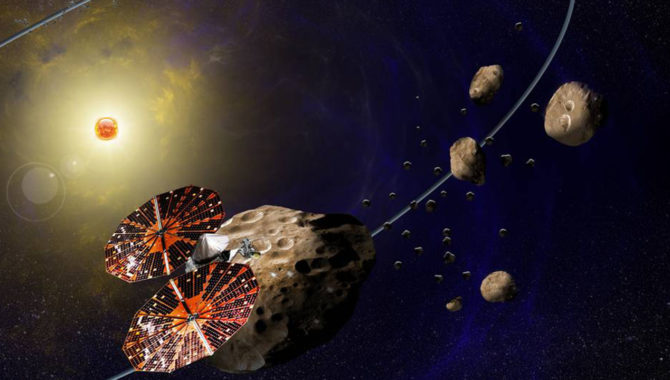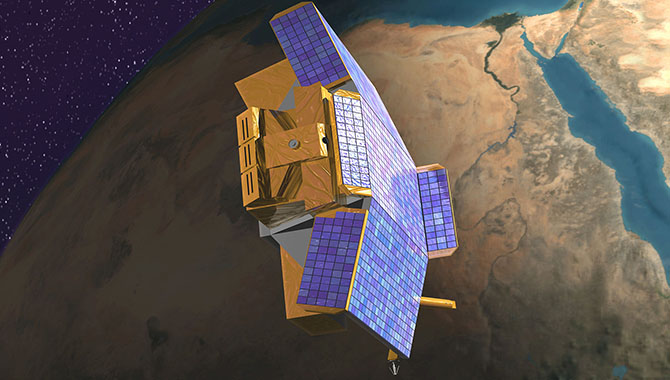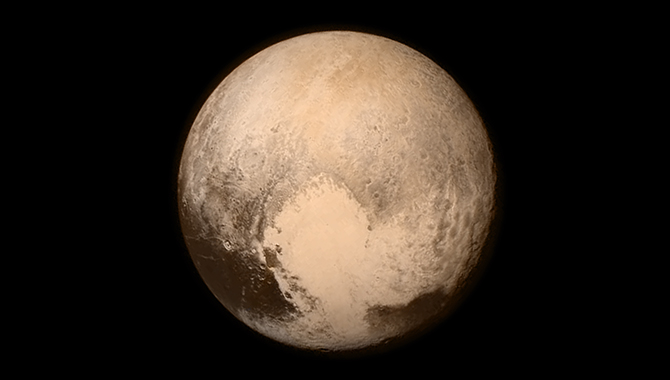
Artist's concept of the Lucy spacecraft flying past several of Jupiter's Trojan asteroids, which are early remnants of planetary formation in the solar system.
Image Credit: Southwest Research Institute
With the selection of two new Discovery missions, Lucy and Psyche, NASA is investing in a deeper understanding of the origins of the solar system.
NASA’s Discovery Program serves as a platform for investigations into the solar system that utilize fewer resources on shorter time frames than NASA’s larger missions while delivering ground-breaking science. Part of the Planetary Science Division (PSD) in the agency’s Science Mission Directorate (SMD), the program selects proposed missions based on their ability to enhance understanding of the solar system and expand university and industry participation in NASA endeavors.
Two new Discovery missions were announced on January 4, 2016. The first mission to launch will be Lucy, named after the early human fossil discovered in 1974. The robotic mission will explore six of Jupiter’s Trojan asteroids: two clusters of asteroidal bodies that orbit the sun along the same path as the gas giant. The Trojans are believed to be remnants, or fossils, from the early age of the solar system, made of materials from which the outer planets were formed.
“These objects represent a population that is now gone,” said Lucy principal investigator Hal Levinson, from the Southwest Research Institute (SwRI) in Boulder, CO. “They went into growing the four giant planets and have been removed by the gravitational influence of those four giant planets. So this is really a unique population.”
Lucy will launch in 2021, traveling first to the main asteroid belt in 2025 before exploring the Trojans from 2027 to 2033. The mission will leverage technological innovations from other NASA initiatives, incorporating updated versions of two science instruments from the Pluto New Horizons mission (Ralph, a visible and infrared imager/spectrometer, and the Long Range Reconnaissance Imager (LORRI) telescopic camera) as well as the OSIRIS-REx Thermal Emission Spectrometer (OTES) from the Origins, Spectral Interpretation, Resource Identification, Security, Regolith Explorer (OSIRIS-REx) mission, currently on its way to study and sample the asteroid Bennu.
Launching two years after Lucy, the second Discovery mission is Psyche: a robotic mission to explore a giant metal body in the main asteroid belt. The target, Psyche 16, is distinct from other asteroids, which tend to be made of rock or ice. In contrast, Psyche 16 is believed to consist primarily of iron and nickel, which is similar to the composition of Earth’s core and may actually represent the exposed core of a protoplanet whose outer rocky coating was stripped away over time through collisions with other asteroids. As a result, the Psyche mission could be science’s best opportunity to directly observe the interior of a planet. The mission will attempt to characterize the geology and composition of Psyche 16 as well as its magnetic field.
“[W]e’re very hopeful that this could be among the most magnetic objects ever visited, and indeed the first dynamo that we could, in a sense, dissect,” said Lindy Elkins-Tanton, Psyche principal investigator from Arizona State University in Tempe, AZ.
The two new missions join 12 earlier Discovery initiatives, including the MErcury Surface, Space ENvironment, GEochemistry, and Ranging (MESSENGER) mission to Mercury, the ongoing Dawn mission to the large asteroids Vesta and Ceres, and the upcoming InSight Mars lander mission, set to launch in May 2018.
Both Lucy and Psyche are expected to encourage significant student involvement to maximize the educational value of the missions. “We already have plans in place for student team activities during cruise and when at Psyche, and we are working on plans to get people involved much earlier,” said Elkins-Tanton. “[A]t ASU, we are very, very interested in […] mixing education and research together and getting as many people involved as possible.”
Each mission will be developed under a budget cap of $450 million while providing unique insight into how the solar system was formed.
“The way I think about Psyche and Lucy is really two chapters of a storybook of the early solar system,” said Thomas Zurbuchen, associate administrator for the SMD. They missions are “very complementary to each other,” he added. “[H]aving the ability of selecting both was really just a dream come true.”
Jim Green, director of NASA’s PSD, agreed. “These are missions of discovery. They’re going to return spectacular results.”
Watch a video in which Jim Green talks about the new Discovery missions.
Read an APPEL News article about notable accomplishments of the MESSENGER mission.









